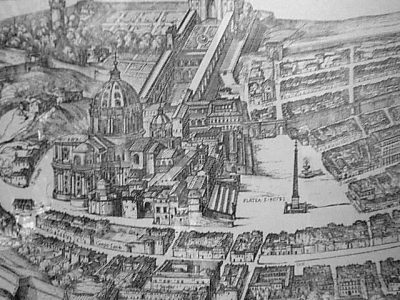The Vatican City State was created in 1929 as a consequence of the Lateran Pact between the Italian Kingdom and the Catholic church, laying to rest a long standing conflict between the two.
The Catholic church had had its own state since the early Middle Ages, the Papal state, which included most of the central parts on the Italian peninsula. This came to an end with the conquest and later annexation of the Papal state to the nascent Italian Kingdom in 1860. Only the city of Rome remained under the rule of the Pope, protected by a garrison of French troops. The young Italian Kingdom was not in a state to challenge France, so Rome was temporarily out of reach for the Italian Kingdom.
The French-German war of 1870 caused the French to withdraw the garrison from Rome, and immediately afterwards the Italian army attacked and took the city, leaving the Pope as a self-declared “prisoner in the Vatican”. The Pope refused to recognise the Italian Kingdom and forbade all catholics to participate in Italian politics, both as voters and as candidates, which had the unwanted effect of blocking the formation of a catholic party and hence reduced catholic influence in Italian politics. The conflict is usually referred to as the Roman Question.
This state of affairs persisted for 59 years, until the ratification of the Lateran Pact in 1929. With the Lateran Pact the dispute between the two parties were settled. As a part of the settlement, the Vatican City State was created as an independent and sovereign state. The Italian State also recognised Catholicism as its state religion, allowed the teaching of religion in public schools and agreed to support the church financially. The Holy See, on the other hand, formally recognised the sovereignty of Italy over the old dominion of the Papal state and removed all obstacles to catholic participation in public affairs.
The Vatican City State is the smallest sovereign state in the world, occupying an area of little less than ½ km2 in the centre of Rome. It covers St. Peter’s Square, the Basilica of St. Peter, the Vatican Museums and adjacent buildings, and the garden behind all this. A number of major churches in Rome and the Papal palace in Castel Gandolfo have extraterritorial status and are under the jurisdiction of the Holy See.
Photo gallery for "Vatican City State"
There are 1 photos in this gallery.

